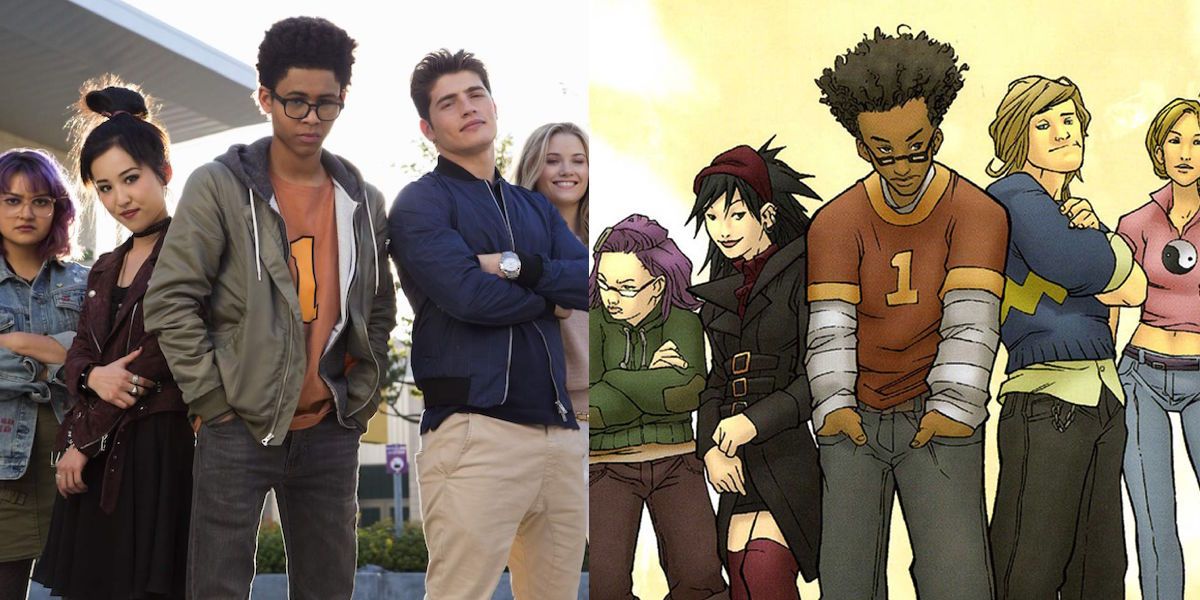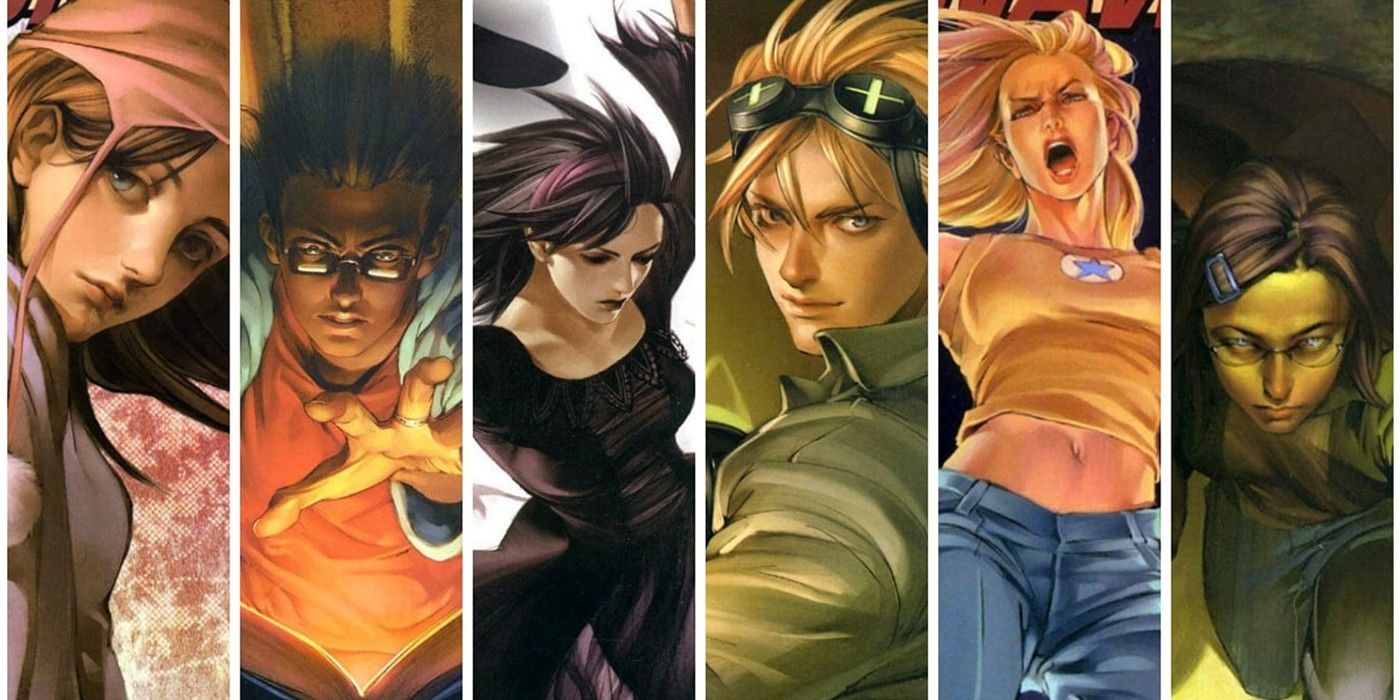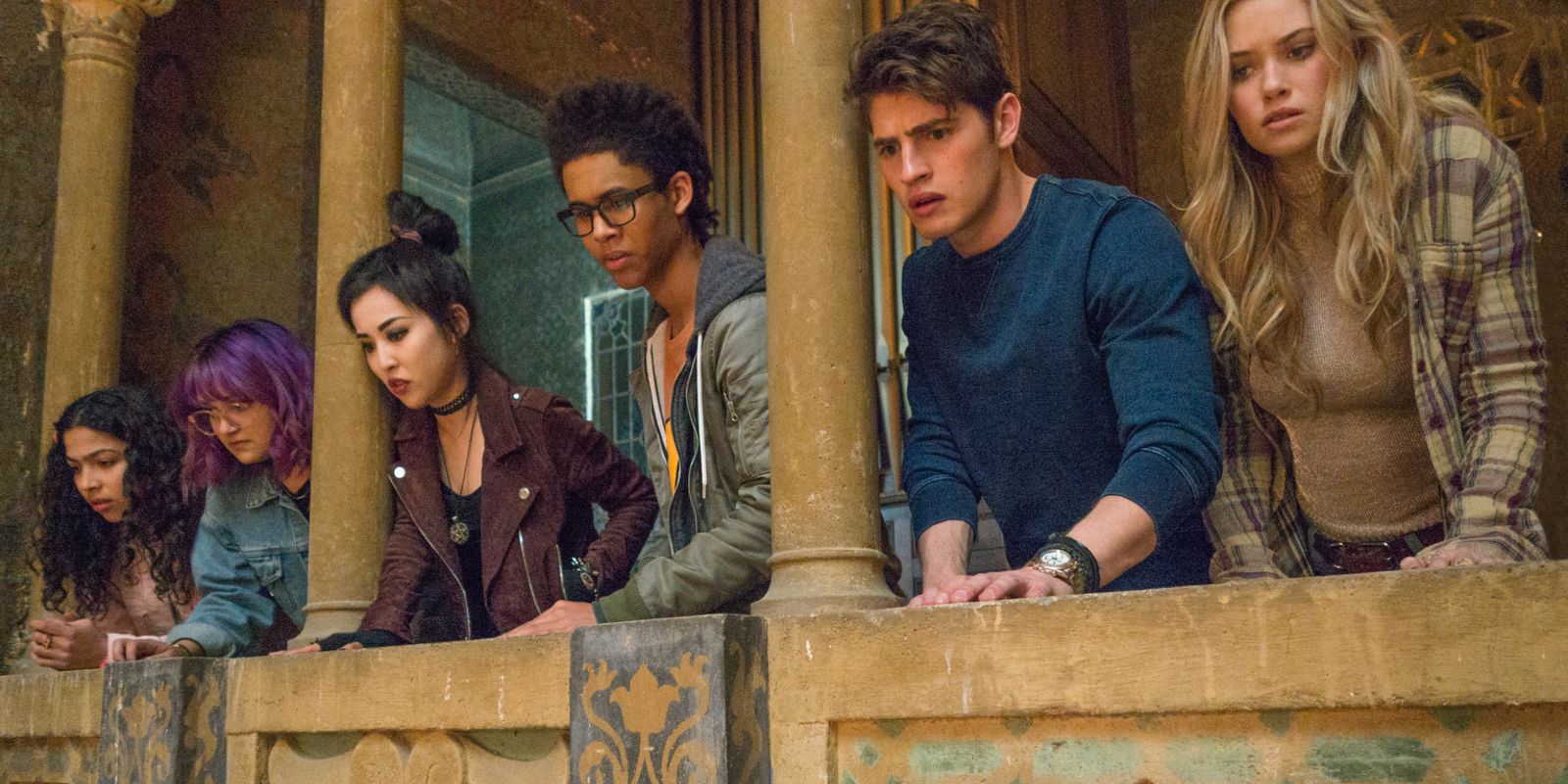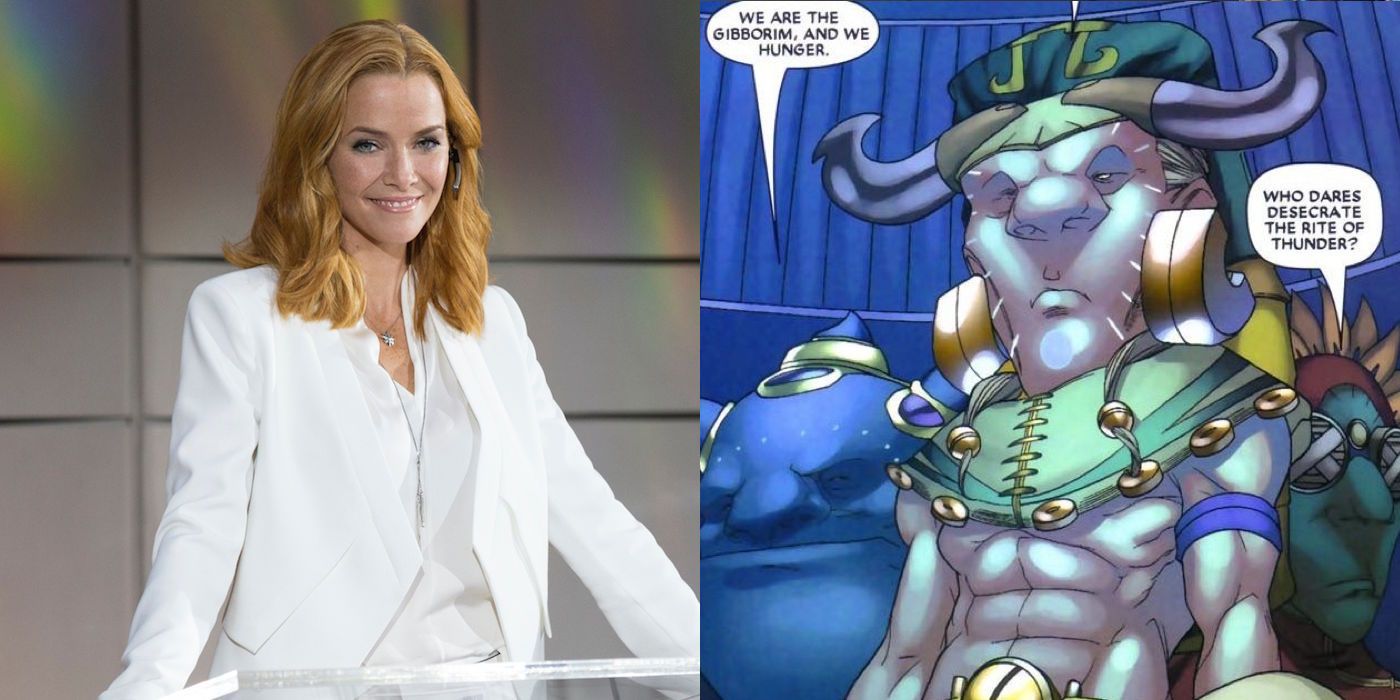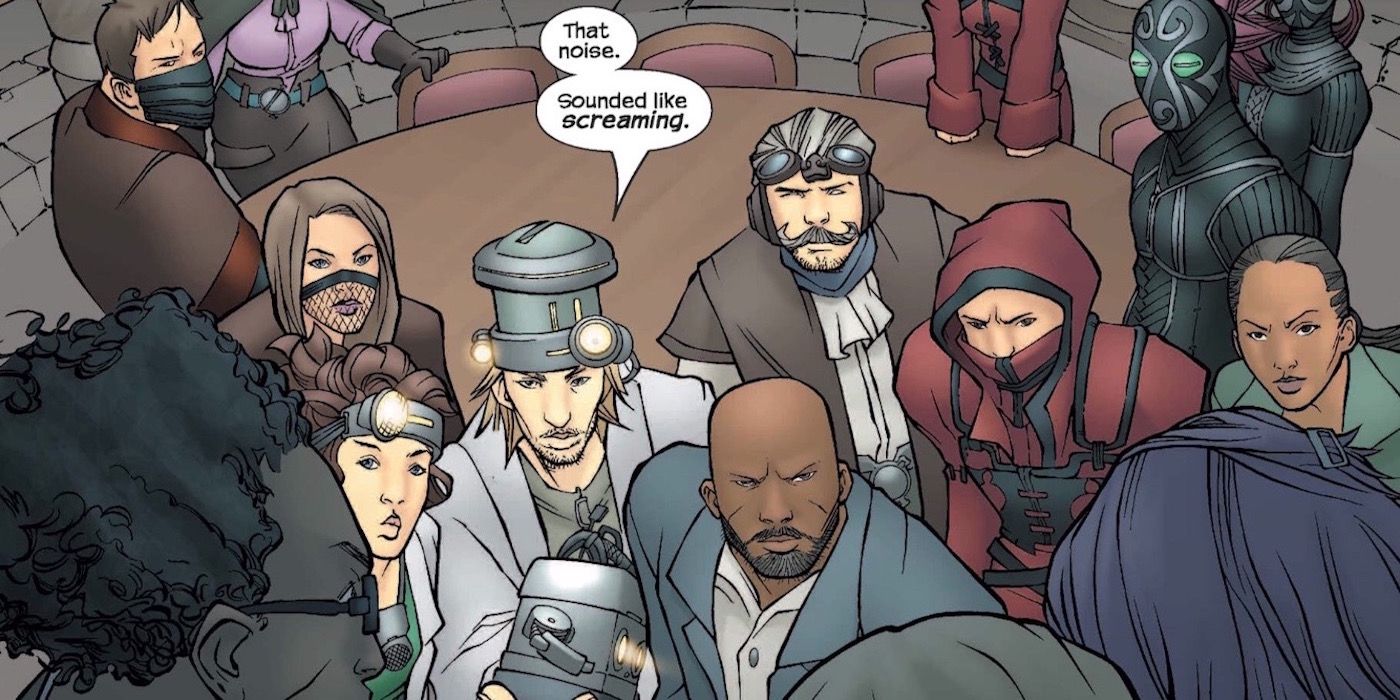After years stuck in development hell as a film, Marvel's Runaways has finally come to life on TV thanks to Hulu. With the first three episodes all released in one go, viewers are able to get a strong idea of the show before it switches to a weekly schedule. So far, critics have mostly praised the series for its blend of sci-fi and fantasy with a coming-of-age story. It's also been remarkably faithful to the comics while still forging its own path.The Runaways have grown and shifted over the years, with multiple titles and an ever-changing roster in the comics. The series, however, mostly focuses on the first volume of the series by Brian K. Vaughan and Adrian Alphona that was released in 2003. Interestingly, the initial 18 issues debuted under Marvel's short-lived Tsunami imprint that was aimed at younger audiences and manga readers. It's not only what shaped the art style, but likely why the series involves advanced tech, magic, and a dinosaur.
Related: Marvel's Runaways: Character & Powers Guide
The series grew from a cult favorite to a legitimate hit, with it being revived in 2005 and the team becoming a staple of the Marvel Universe since then. With Vaughan serving as a consulting producer on Runaways, it's no wonder the show is faithful to the comics. Still, some changes had to be made for the comic's adaptation as an MCU TV show.
The Runaways
Given how important the teen heroes are to the story that bears their name, it's fitting that they undergo the fewest changes. It's in the reason they grow apart and come back together, however, that one of the biggest alterations occurs. In the comics, each of the Runaways are an only child. The addition of Nico's deceased sister Amy, though, adds a compelling reason for there to be tension between the kids. It also complicates Nico's home life and fuels her interest in Wicca. While the story smacks a little too much of the depressed-teen-turns-goth trope, we know this is more than a phase for Nico. As for her look, she's dead-on from the comics and soon has her first encounter with the Staff of One, which she'll eventually wield.
Alex Wilder is incredibly faithful to the comics, down to the t-shirt he wears in the pilot. In the comics, he becomes the de facto leader of the group and mostly keeps them together. Here, that's turned into Alex being who brings the friends back together after two years apart. He's also a genius in both strategy and logic, something we don't really see in the three episodes so far. Instead, he's presented more as a geek who's nevertheless cool under pressure. The results are roughly the same, especially given the kids don't immediately run off on their own after seeing what their parents have done.
Like Alex, Gert Yorkes is pretty pitch-perfect when it comes to her adaptation. Her look is strikingly similar to the comics and her personality matches as well. She even gains her partner Old Lace, a velociraptor whom she shares a psychic connection with. The one big change to Gert's life is actually Molly's one major deviation from the comics.
On the page, Molly Hayes is the daughter of two mutants who are also in the Pride. Rather than confront the issue that Marvel can't use mutants, however, the Hayes”changed to the Hernandezes in the show”are sacrificed for the on-going mystery of the series. It's a big change, but allows Gert and Molly to connect on a new level while prolonging the mystery of the youngest Runaway's powers. Even better, but this sisterly connection was originally intended for the characters by Vaughan, who instead drew Molly to Chase in a similar manner.
Chase Stein is most familiar thanks to his x-ray goggles and Fistigons, the former of which he gains in episode 3 and the latter of which he's designing in the pilot. In the comics, it's hinted that Chase has wasted intellectual potential, but he's mostly shown to be a goofy jock. The show changes this by making him a genius inventor himself, whereas the Fistigons in the comics are made by his father. We also haven't seen as much of his humorous side, but the additional shading has so far been a fitting addition.
In terms of look and personality, Karolina is ripped straight from the pages of Runaways. Her powers also seem to be intact, as we see her light up in dazzling shades during a party scene. In the comics, she can manipulate light and fly, and we've been told the full extent of Karolina's powers will factor into Runaways. One big question, however, is whether Karolina is still an alien.
Showrunner Josh Schwartz recently claimed that the Runaways' parents won't have superpowers and stated that the genre elements of the comic wouldn't factor into the grounded show as much. Despite the fact that we've already seen evil cults, super-powers, magic, and dinosaurs, this statement doesn't make much sense. It does, however, draw into question whether the Deans are aliens like in the comics.
Part of the Majesdanian race, Karolina's abilities are suppressed by a medical alert bracelet she's worn her whole life. In Runaways, this is changed to a Church of Gibborim bracelet. The effect is the same and there's no reason to believe Karolina isn't an alien other than Schwartz's recent words. But the small shift in jewelry for Karolina marks one of the biggest changes from the comics.
Gibborim
The Gibborim are an ancient and powerful race of giants, said to be children themselves despite their advanced age. Claiming that Earth was once a paradise, the Gibborim forge together a group called The Pride in 1985 to help them restore the planet. They augment their wealth and power, and in return receive a yearly blood sacrifice. They mark one of the more fantastical aspects of Runaways in the comics, so it makes sense they're changed for the show.
We don't know the full extent of the Gibborim in the series, but their name is more out in the open. Rather than aliens posing as actors, the Deans run a Scientology-like church using Gibborim as the namesake. Or rather, Leslie runs the church while her husband Frank remains an actor and is oblivious to what's really going on.
Related: The Evil Parents on Runaways Won't Have Super-Powers
Housed in Leslie's meditation room is what looks like an incredibly old man hooked up to an alien looking breathing apparatus. Whether this is one of the Gibborim or the grandfather of Karolina that's said to have founded the church, it's unclear. He does, however, seem to feed off of the sacrifice the Pride provides each year. And given that the whole group views this as a necessity, some version of their power and influence must come from the mysterious being.
Even without knowing where the plot is headed, it's already a sizable departure from the comics. But it does mark a more grounded and sustainable approach than the comics. It also has the potential for plenty of story resonance, and it's certainly not a stretch for actors to be part of a high-profile cult.
The Pride
Even more than their children, The Pride undergo a number of changes as individuals. The group, however, remains fairly faithful to the comics outside of the Gibborim connection. Posing as a charity group, The Pride (which stands for œPromoting Resilience, Independence, Dedication & Excellence in the show) controls the criminal underworld of Los Angeles. Most of this is done through the Wilders, who are akin to Norman Osborn or Kingpin in their grip on crime. The show changes this to make Geoffrey Wilder a former member of the Crips and current real estate mogul. His wife, meanwhile, works for the court.
This trend continues with the other parents to an extent. The Deans we've discussed, but the Minorus are changed from wizards to tech entrepreneurs who run a company called Wizard. Essentially the Apple of the MCU, Tina is the brains and Robert seems to run the business. Tina does, however, maintain the magical Staff of One last seen in Doctor Strange. In the film, it was in the possession of a younger Tina Minoru played by a different actor, marking one of the bigger continuity flaws in the MCU. Still, it's hard to complain when Runaways shows us more of what the Staff of One can do. Unlike the comics, it doesn't operate on spoken commands, though, which led to some creativity on the page as an exact word or phrase could never be used twice. How the show will restrict its reality-altering powers is yet to be seen.
Victor Stein remains a gifted inventor (though his wife loses this trait), but his status as a mad scientist is shifted to the Yorkes. In the comics, Gert's parents are actually time-travelers, which is where Old Lace comes from. Here, they're geneticists who run a company called Synnergy and seem to have created their own raptor.
The final group of parents, the telepathic Hayes/Hernandezes, are one of the remaining mysteries. It's clear they were part of The Pride until their death in a fire 10 years before the show. Along with a connection between the Yorkes' memory serum and Frank Dean as well as the Church of Gibborim, the Hernandezes' death looks to be one of the central mysteries of the show.
---
Though a number of big changes to key characters and backstory take place in Runaways' jump from page to screen, the series is still remarkably faithful to the tone and themes of the comics. The core attributes and powers of the teens all look to be intact, and The Pride have become far more fleshed out in three episodes than they've been in the whole of their time in Marvel Comics. We'll have to wait to see how some of the plot changes play out, but Runaways is both faithful to the comics and an improvement on the source material.

